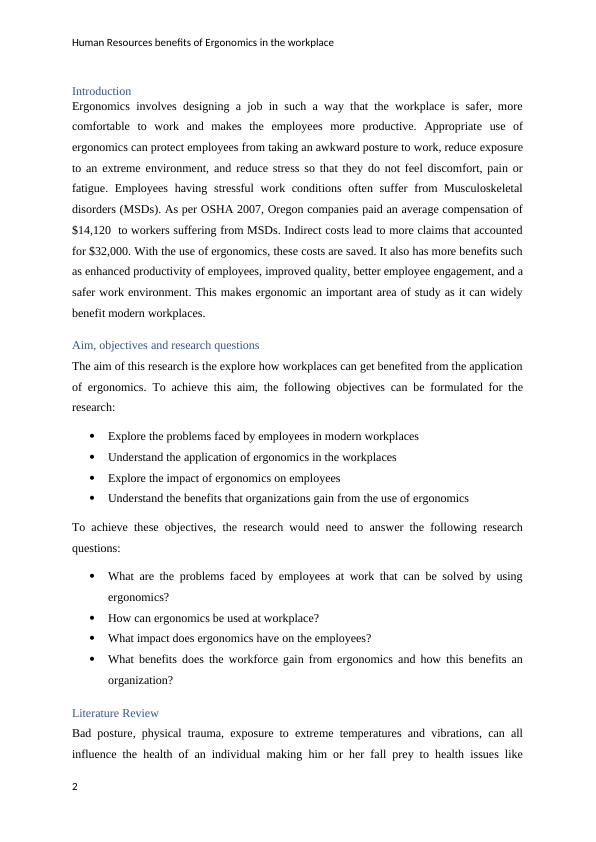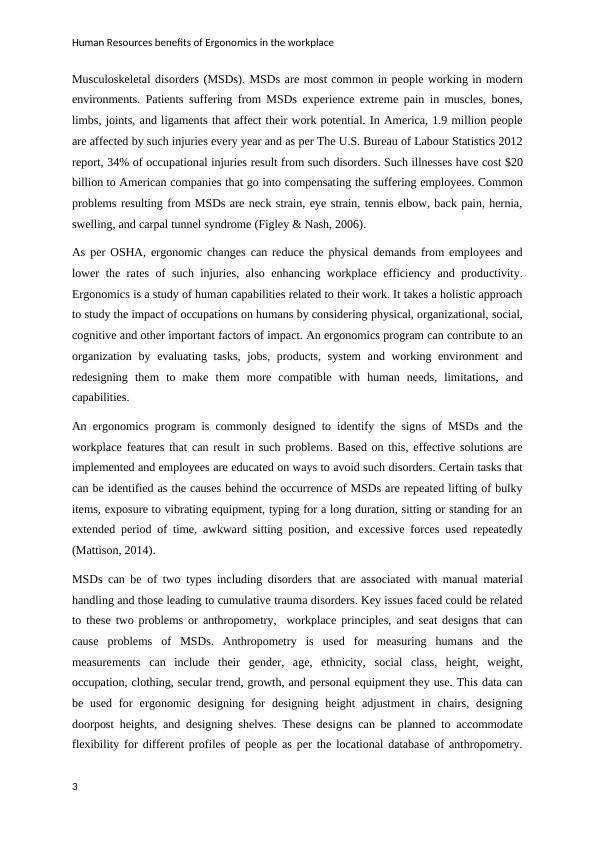Human Resources benefits of Ergonomics in the workplace
7 Pages1855 Words89 Views
Added on 2023-02-01
About This Document
This article explores the benefits of ergonomics in the workplace, including improved employee productivity, engagement, and safety. It discusses the problems faced by employees in modern workplaces, the application of ergonomics, the impact on employees, and the benefits for organizations. The article also includes a literature review and research questions.
Human Resources benefits of Ergonomics in the workplace
Added on 2023-02-01
ShareRelated Documents
End of preview
Want to access all the pages? Upload your documents or become a member.
Ergonomic Evaluation of the Packing Line
|6
|1195
|386
Musculoskeletal Disorders in the Manufacturing Industry
|8
|2327
|203
Concept of Ergonomics (pdf)
|13
|3771
|67
Work Place Hazard in Nursing: Types and Recommendations
|16
|1157
|449
Ergonomic Initiative for Improved Workplace Posture
|4
|772
|111
Professional Reading and Writing - Ergonomic Initiative
|5
|854
|293



